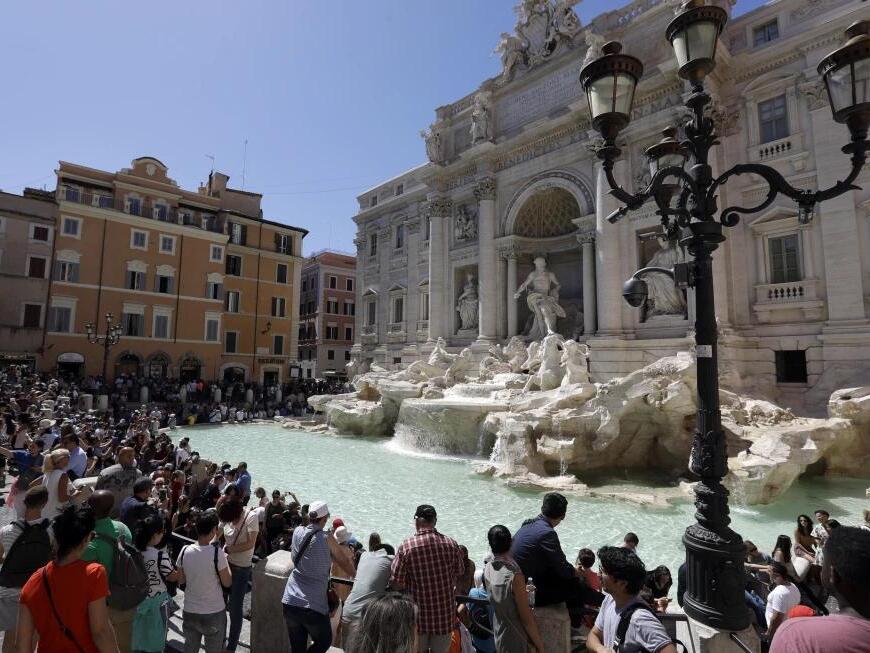Physical Address
304 North Cardinal St.
Dorchester Center, MA 02124
Physical Address
304 North Cardinal St.
Dorchester Center, MA 02124

In Rome, tossing a coin into the Trevi Fountain has become a popular tradition among tourists seeking to ensure a return visit to the Eternal City. This longstanding custom results in large crowds flocking to the Baroque fountain daily, many snapping selfies while making wishes.
To manage the influx of visitors to this iconic landmark, city officials are contemplating a new initiative: a 2-euro ($2.25) entry fee to access the open-air fountain, which has previously been free to the public.
This proposal was put forward by Alessandro Onorato, the city’s leading tourism representative, following a similar move in Venice, where a 5-euro access fee was implemented for daytrippers this summer. Before this new fee can be enforced, it must be approved by the City Council, though Rome’s Mayor, Roberto Gualtieri, has already expressed his support for the initiative.
Onorato highlighted that the proposed fee is comparable to the typical amount visitors toss into the fountain, suggesting that it would serve both as a symbolic gesture and a practical solution. He remarked, “Two euros is more or less the same amount that people toss into the fountain to make a wish.”
As tourism continues to rise globally, many cities are grappling with the challenge of managing the impact of large crowds. While tourism greatly benefits local economies, it can also strain resources and diminish the quality of life for residents. Onorato emphasized the need to strike a balance, saying, “We have to avoid, especially in a fragile art city like Rome, that too many tourists damage the tourist experience, and damage the city.”
Onorato envisions a trial period for the entrance fee, aimed at being operational by the spring in time for the 2025 Jubilee Holy Year. This system would be supported by a reservation method utilizing QR codes for smooth entry.
The proposed fee would specifically apply to those wishing to enter the nine marble steps leading up to the edge of the fountain. It is important to note that individuals simply passing by in the piazza would not be subject to this charge, and Roman residents would enjoy free access.
Another anticipated benefit of this initiative is a reduction in inappropriate behavior around the fountain. Onorato noted that the fee could deter visitors from eating on the steps, feeding pigeons, or even recreating scenes like Anita Ekberg’s famous dive into the fountain from Federico Fellini’s classic film, “La Dolce Vita.” Such acts often come with fines, and he believes that the new system could help mitigate these occurrences.
“It would happen less, or maybe it wouldn’t happen at all, because whoever would enter, we would know their names and where they live. It becomes more complicated,” Onorato explained, indicating that the system would allow better monitoring of those who access the fountain.
As tourism authorities in Rome look to implement these changes, it reflects a growing trend seen in many beloved tourist destinations worldwide. Striking a balance between maintaining cultural heritage and accommodating visitors is becoming an increasingly crucial concern for urban planners and local governments.
The proposed system at the Trevi Fountain not only aims to protect one of Rome’s most cherished sites but also seeks to enhance the overall experience for both tourists and residents alike. As cities evolve and tourism habits shift, Rome’s efforts may serve as a model for others facing similar challenges in preserving their historic sites.
Source: AP News



